By Robb Williamson
I have been lurking onLuLafor a long, long time and soaking up the raging debate on 35mm vs MF vs Value vs Film vs (for some) moving on to a different profession… just/ kidding.

My Background…
I’m quite happy with my work as a commercial location photographer the last 18 years and thought I would add my two cents on the newLeaf Aptus II 10back and my experiences and how I came to my decision. I went back and forth trying to rationalize the purchase of a high-end digital back the last several years. In the film days, I enjoyed shooting with my Leica Ms, Canon F1s and Eos 1s, Hasselblad 203s, Mamiya 7s, Fuji GX617s, Fuji 6×9 rangefinders, and Contax 645. I enjoyed shooting with all of these cameras for different reasons and I grabbed the best tool suited for different jobs. Plus I like variety.
Watermelon is my favorite but I don’t want it every day.
The Nikons and Canons do the job but I don’t want to get stuck with a formula every job. That’s how you burn out as an artist.
Back when we were expected to travel with three camera formats and cases and cases of gear, they all came or many did each trip. I love the technical side of photography just as much as the creative visual side. I never found the need to shoot 4×5 for my clients or myself mostly due to higher film cost and preferred to shoot more rather than less. I never liked the idea of delivering "only 5 images to a client" and normally would end up delivering 100-200 on a typical day out there for locations. It’s about the same now with digital. I can shoot 1000 frames a day, experiment more, and still get my 100-200 final images to deliver that I am pleased with and some nice surprises along the way. I stuck to 120mm film and it served my needs well with nice blowups from 24 x 36” from the 6×9’s to 30 x 90” panoramics from the 6×17’s.
I am VERY glad that my film days are behind me. I had a client specifically request that I shoot film on a project this summer and I really didn’t enjoy the lack of control that I now have with my digital cameras and the workflow with the Nikon D3, D3X, Leica M8 and now the Aptus II 10.
___________________________________________________________________________________
What I Shoot and What I Shoot With…
I specialize in aviation, architecture, landscape architecture, land development, and people on location. I work with several creative agencies but mostly work with companies directly. I find it easier that way but also enjoy the collaboration of AD’s, CD’s and that side with a good team. The end result is normally stronger as long as there aren’t too many cooks in the kitchen. My images are used from everything from web use to collateral material printed for annual reports, branding pieces, and large handouts to clients. Many images are also used as very large display prints in offices and sales centers. The designers use them to show off their architectural projects and to sell a community, high-end real estate or their amenities on a large scale. My aviation clients do the same and use the images printed for waiting rooms at airports, conference rooms and for convention booth displays. There has been a shift to smaller image files but I find that my clients still need large prints and big files although not for every image. Nothing says thank you from the photographer more than a gift of a large signed print of your (and their) favorite image from the work you just completed.
I have an epson 9880 and enjoy printing really big – 24 x 36", 40 x 60" and even longer panoramics. It’s the best way for me to experience images and show off my work. The M8 files look great up to 24 x 36" and I really enjoy the B&W’s from the camera. I’m sure the M9 images will print even nicer although I’m pretty happy with everything the M8 does except the battery life and framing quirkiness. My Nikon D3X really is the greatest camera ever made, in my view. Combined with its D3 brother, I can’t think of anything they can’t do – except stay low-key in public places and not attract security guards. I switched to the Nikons from Canon a year and a half ago because of a couple of reasons. One reason was the newer optics in their lineup that are just stellar. The 14-24, tilt shifts, 24-70, and the 200-400. Canon really never had these gems. Yes I miss Canon’s fast primes, and hope that Nikon or Zeiss will add a couple more soon. But those don’t pay most of my bills other than the 85 f 1.4. Another reason for the change was indeed the AF in servo mode and even when single point focusing for the Canon’s. I haven’t had the Nikon’s back or front focus. They are just ON. The final reason was the image quality from the files that are in another league. I spend less time in post and I know the D3x will deliver without fail. My only criticism is the lack of a built in sensor cleaner. I do have to spend more time cleaning the sensor prior to a shoot or risk the wrath of extra time getting rid of dust spots in post. The Nikon D3X files are absolutely fantastic and I have printed them to 40 x 60" without issues. Lots of detail and fantastic DR. I always wished for some MORE detail out of them at that size (I’m greedy – aren’t we all), but absolutely no complaints at 24 x 36” and smaller. I’m sure I will need video at some point and Nikon will give me another reason to upgrade in the future to a D3s, but besides that, the low noise, ease of operation, and dependability make them bulletproof in any commercial situation. I don’t forsee a newer generation improving my work.
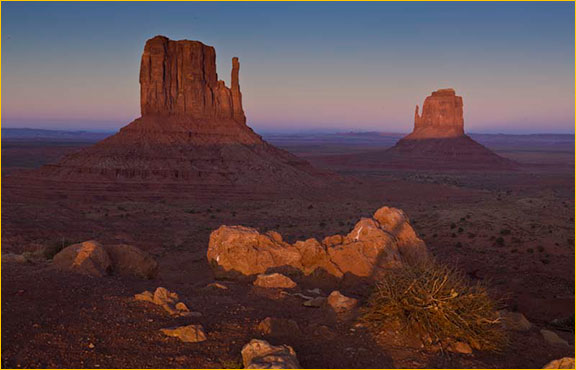
___________________________________________________________________________________
Enter Leaf…
I had moved on from every MF system in my past except the Contax 645 because of the lack of a digital solution that was as easy as using the Nikon’s and Canon’s. I wasn’t interested in a scan back and for many of the cameras I used, there would never be a MF rangefinder solution. At the last two Photokina’s, I was really amazed at the quality of the images from the Phase One P45+ and Hasselblad HD3-39II systems. I demo’d both systems there and thought they were both good tools. The Hasselblad was a nice modern integrated system but I was hoping to keep my costs down and their lenses were very pricey. The ergonomics weren’t as good as the Contax. I loved the Mamiya 7 lenses but never liked the construction of many of the Mamiya 645 lenses or their bodies. It was hard to beat my Contax 645 and the Zeiss lenses. Not to mention the vertical grip, waist level finder, and its ability to use Hasselblad FE lenses as well. That 110mm f 2.0 is very sweet. The Alpa booth really had some stellar examples that I could see where there was still a big difference in image quality from 35 cameras. I feel stupid that I spent all of my time when in the MF areas at both Phase One and Hasselblad and just didn’t make it by the Leaf exhibits at either show. I had always seen their ads focused on fashion and beauty and knew that really wasn’t my market. I never saw them focus on other types of commercial work, where the marketing at both Phase One and Hasselblad shined.
I made some calls last March to several dealers and started to get serious about the purchase of the back to go with my Contax 645’s. The costs had just been lowered by the players and I thought it was finally time to add the extraoomphin my kit which would give me an edge for my printing and large displays. That’s what it was all about to me. Pure resolution and clarity.
I had started the busiest time of my season – spring. So I decided to keep plugging away with the Nikons and look at the digital back choices again throughout the summer. The Phase One P65+ seemed out of my price range. Great file at 22 x 30” @ 300dpi. The refurbed P45 and P45+ backs looked pretty attractive. I saw an ad for the Leaf AFI system in PDN and remembered a review, so I thought I would see finally what they were all about. I demo’d a Leaf AFI-7 for 4 days from Mike Edwards, the National sales rep who lived near me in Colorado. He was very helpful. I liked the back a lot. I didn’t gel with the AFI body at all, but I concentrated on the back and how it worked with my shooting style. The 33 meg resolution was very nice and clean shot at 100 ISO on and off a tripod – where I spend most of my life in MF. The resolution seemed like it wasn’t a big enough stretch away from the Nikon D3X to warrant the cost. It was definitely sharper with more detail but I didn’t feel that it was a big enough gain to warrant the large cost.
I thought the screen was much nicer than the Phase One or Hasselblad screens I had seen at Photokina. I liked the user interface with the stylus or using the tip of your finger. I shot some night scenes and tried all of the ISO’s. I shot compressed and uncompressed to the CF cards with no visible difference. The shooting speed at 1 frame per second really wasn’t a problem for shooting the architectural projects I was trying the back out on. Kind of like shooting MF with film all those years. No biggie. I didn’t need the back to replace all of my other cameras but provide me another tool in the box. The tilting screen was a nice feature but I understood that the Aptus II back wouldn’t have that feature for my Contax – only the AFI back. It’s a shame they couldn’t put that on all of their backs. It was a great idea. The small fan didn’t make much noise and I liked the beep that told me when I could shoot the next frame. Kind of like waiting on strobes to recycle, but much quicker. Grain reared its head at 400 but it wasn’t objectionable – more film grain like. I wasn’t crazy about the 800 ISO which I was told wasn’t the back’s strength. I’d have the Nikon’s for that use. I loaded the Leaf Capture software on my Mac and quickly found that it wasn’t bad but not convenient for me with lots of files and a very simplistic interface. Capture One or Lightroom 2 was better suited to my workflow.
I had wanted to demo an Aptus II 10 back for my Contax at that time but the rep said they were having sensor delivery issues from the Dalsa factory and that they just didn’t have any to demo or deliver at that time. They were priced slightly lower than the P65 so I thought I might actually stretch to that next level and get even greater resolution than the P45+ and get into a whole new ballgame than the D3X. I printed some images from the AFI7 and felt that the MF difference was noticeable to the 35 cameras even at that level. The resolution and clarity was there.
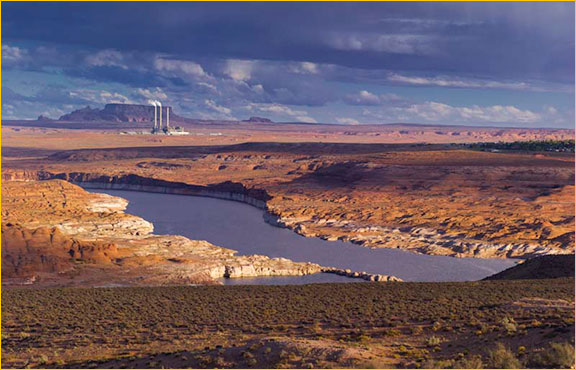
___________________________________________________________________________________
Putting the Money Down…
So Leaf is sold to Phase One with lots of unknown’s thrown into the mix. GREAT! Were my choices being reduced? I called Capture Integration in Atlanta and talked to Dave Gallagher again. I had talked to him in March and found him and his staff very knowledgeable, friendly, and ready to help. I knew that they would be there for me if anything went wrong because of reading all the positive posts on the LL forum. Dave and Doug Peterson walked me through the options and choices that suited a digital back to my style and what I might get the most value from. Dave gave me pricing for lots of options. He indicated that the Phase dealers would be able to place an order for the Leaf backs because of the change of ownership and the uncertain negotiations with the MAC group. That was great because I knew I had the right dealer who could provide either a Phase One or Leaf back – whichever direction I chose for the Contax.
Now I just needed to choose between the different backs, their pluses and minuses. I needed a back without much of a crop factor because of my wide angles and my architectural and landscape work. So the P30+ and the new 40+ were out in my mind. I really didn’t like the size or resolution on the Phase back’s display screen but was willing to put that aside if the rest of the package was there. The Leaf Aptus II 7 wasn’t a big enough stretch from the D3x so it was out. It came down to a P45+ and the Leaf Aptus II 10. I couldn’t stretch to the P65 – it was just out of my budget. So 39mp vs 56mp. A bigger screen vs one that was harder to work with and see. Very long exposures vs a top limit at 30 seconds. Lower price vs higher price and what I could spend the extra cash on. Leaf Capture vs P1 software. I could have the P45+ the next day. I had to wait 6 weeks for the Leaf Aptus II to fit the Contax. Established track record vs a company in turmoil. Lot’s to think about. Which would last longer before being caught by the next generation or two of 35mm cameras. The D3x gave me a 13.5 x 20” @ 300 dpi. The Phase P45+ gave me an 18 x 24” @ 300dpi. The Leaf Aptus II 10 gave me a 20 x 31” @ 300 dpi. The Phase P65 was a 22 x 30” at 300dpi. The Leaf was quite a bit more expensive that the P45+ but still less that the Phase P65. I talked it over with my girlfriend who knows me and what I shoot pretty well. It was a fun discussion looking at all the factors. I put a down payment down the next day on the LEAF Aptus II 10 and didn’t look back.
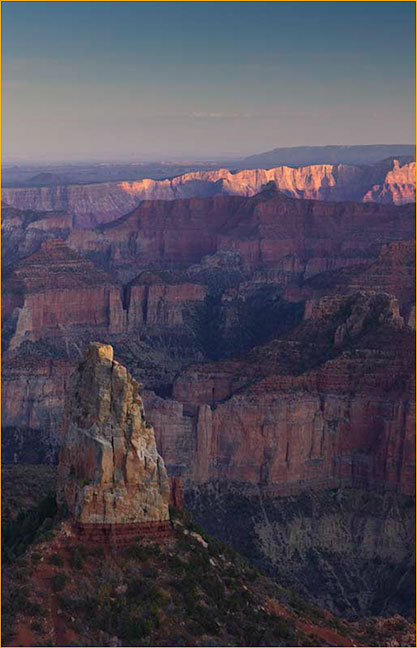
___________________________________________________________________________________
Waiting for the unknown…
I pretty much put the purchase to the back of my mind because I had to wait the 6 weeks or more to receive the LEAF. Because they don’t sell as many in the Contax mount, they assemble them in cycles with more time dedicated to the most popular mounts of the H2 and Mamiya/Phase. A lot could happen in six weeks. I wasn’t concerned with the LEAF company being sold to Phase One except for possible delays while they combined assets or came up with new policies. I was reassured from Dave Gallagher that Phase One was a strong company that would make sure to take care of their new Leaf customers with the same level of service that their reputation has earned them in the past. I looked forward to delivery of the back even though some posters on the LL board thought anyone that would go near a Leaf back at that time belonged in the rubber room with a straight jacket! Well it wasn’t that scary guys and gals. I felt safer than buying a GM vehicle or putting money in the stock market. Dave at Capture Integration kept me in the loop about the order and waded through the new arrangements ordering a Leaf. It was their first Leaf back from the new Leaf Imaging company/ under Phase One.
Two weeks later, I had an assignment to shoot in Augusta, Georgia and decided to stop in to meet Dave and his staff in person in Atlanta. Even though the back hadn’t arrived yet, I liked the idea of meeting them, seeing where they worked and looking at their recommended workflows with MF backs. Dave Gallagher drove out to meet me at my hotel and we grabbed a drink at a local restaurant. He was headed out of town the next day but wanted to take the time to meet. In a word, Dave wasGreat. He was full of information, history, and very helpful in answering my additional questions. I know he would go to the mat for me and be a great resource in my future. I made it to his office the next day and Chris Lawry showed me around. It was good to meet Karen who would be collecting the rest of my money when the back arrived. I was interested in the Cambo Wide RS and its lenses that would work with the Aptus II. Chris showed me how they would work and how I could very easily stitch my favorite 6×17 format with two horizontal frames from the Aptus II 10. That is a great tool as well and I am saving for it as we speak. We called Doug Peterson at their Miami office to ask a couple more questions. Then I headed out after lunch with Chris. Great visit.
More work with the Nikon’s in the next few weeks. I called to check on the back’s ETA after a month. Karen thought it was shipping but it ended up being a false alarm. Six weeks to the date, my back had arrived in Atlanta and was ready to go FedEx to Colorado. How exciting to get that call! I got Capture Integration paid for the remaining balance and was looking forward to getting the back to take out for my inaugural voyage. Just in time for Fall in the Rockies.
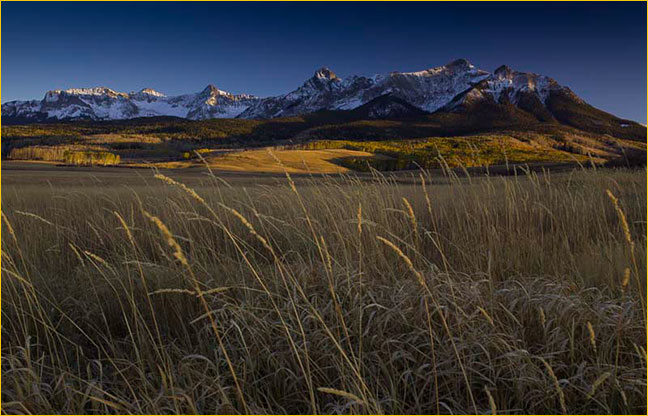
___________________________________________________________________________________
The Back Arrives…
FedEx arrived a couple days later and I was right in the middle of shooting a campaign for a community developer and moving my studio to a new location. There was a lot going on. Other clients were calling for some late work before the change of seasons. Not a bad problem to have but the Aptus II would have to wait a bit. I did manage to go through the case’s contents, read the manual, and charge the batteries. It was serial # LI 500000. I hadn’t heard that there were many that had been delivered yet around the globe. I think mine was the first ordered from the new company, hence the LI serial #. Steve Hendrix from Capture One called to make sure the back arrived safe and to go over any initial questions I might have on operation. I asked him a question based on my very quick review of the menu system at delivery. How could I shoot non-compressed (.mos) files. The AFI had that feature in the menu that I could choose, but the Aptus II 10 back would only let me shoot compressed. This meant that I would have to bring the files into Leaf Capture 11.2.8 and save them back as uncompressed before I could use them in Lightroom 2 – my preferable raw converter. Not a huge pain, but an extra step. I’d rather shoot uncompressed to the CF cards and go directly to Lightroom. One of the batteries didn’t seem to charge or power up the back and he said he would send me a replacement battery and get back to me the next day. I managed to head out that night for a test in my neighborhood with my son because I was free from my clients. We went to a park and focused in on some kids playing soccer and some play areas and some quick portraits of him. It was really too late to get more than 15 minutes shooting with the sun, but you had to start somewhere. We came back and loaded the files for review. I had an issue with viewing the images on my MacBook Pro with SnowLeopard in the previews. I called up my Leaf sales rep in Colorado again, Mike Edwards and asked him questions about the issue. I had to save over a brand new monitor profile to get everything working as it should. The previews were clear after that. I started to take a look at the detail of the files and was very pleased with the results. Great detail. Great colors from my Zeiss lenses. It would be a fun couple of weeks getting to know the Aptus II and putting it through its paces before taking it on a commercial job.
Steve Hendrix called me back the next morning after talking to the designers at Leaf to let me know that the Aptus II 10 wouldn’t shoot uncompressed and he gave me a workaround to quickly save them from Leaf Capture. Basically by selecting all of the images and changing the rating of the images or changing a curve and hitting save would get uncompressed files on the folder in the hard drive. I could then open up the files in Lightroom 2 from the same file folder. Steve indicated that I would have the best results by processing in Leaf Capture especially at higher ISO. I have plenty of time to explore those options and will also look at Capture One when Phase adds the Leaf back’s to their profiles (now done on C1 5.0). But no real issues in the meantime. I went with my son to get him a much needed haircut and tried the Aptus II indoors with the fast Zeiss primes at ISO 200 and 400. It was a fun exercise seeing what the back was like to work shooting moving people. I liked the results a lot and wouldn’t at all limit its capabilities to only static landscape images locked down on a tripod.
___________________________________________________________________________________
Hitting the Road…
A week later I was finally ready to take it out. I had a couple of weeks off before some other aviation work was scheduled for a trip to Florida. I had added 4 Lexar 16 GB cards (300x) for use in the back. Each would hold 200 compressed images. Steve indicated I had to format them in my MacbookPro first and label them a certain way the first time so that the back would recognize them without losing any images. That worked very nicely and I haven’t had any problems with the cards at all. I picked up 4 extra Leaf batteries and had two more on order, so that would give me 6 batteries to take with me now and 8 to go with me in the future. I don’t shoot tethered with my Nikon’s and unless you put a gun to my head, I won’t be doing it with the Contax either. That’s just not the way I shoot.
I wish the battery charger (a Hahnel MCL 103) held more than one battery at a time. The light blinks contrary to the legend listed on the back. It just blinks red led’s all the time. Battery dead and charging – blinking red LED’s. Fully charged – blinking LED’s. So it charges the batteries, but you never really know when it is done or how far you have to go. I will have to look at finding a double charger and one that works with the blinking indicators the way it was intended. I’m sure Steve Hendrix will help me figure it out.
Before I left, I took out the overlay form the case for the focusing screen. It is a thick piece of plastic that is solid that shows the proper framing – Just a very little bit blacked out at the top and bottom of the screen. The sensor uses the full width of the 645 frame – 56mm x 36mm. The overlay is not a piece of acetate or a bendable sheet. I had a very hard time installing it properly and finally said – screw it! I couldn’t tell where it was supposed to mount. It wasn’t easy and the instructions didn’t make it any easier. I decided that I would call Bill Maxwell to have him make me some custom screens with the Aptus II 10 framing. Much easier solution and brighter as well. It was easy enough for me to estimate the cropping for this trip since it’s not really much at all cropped from the top and bottom of a horizontal full frame.
I looked forward to a week on the road with the Aptus II after a very busy summer with very little time off. I headed to Telluride, Colorado about six hours away from my home to try to catch some late fall color and then planned on camping in northern Arizona. I wanted to see what the back could do with some landscape images with lots and lots of micro detail. I needed to shoot this type of environment first and make some big prints. If the back could do well in this environment (as I expected) then I looked forward to integrating it into my commercial work instead of just for personal projects.
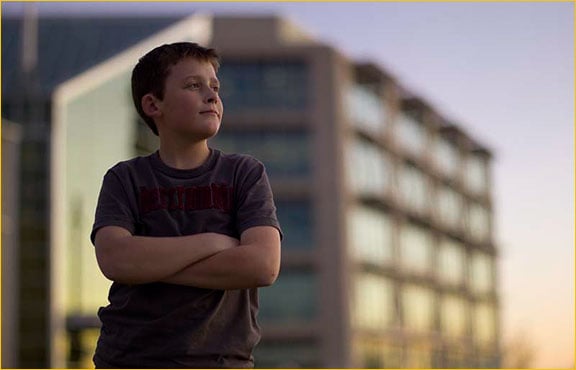
___________________________________________________________________________________
Starting to Really Shoot…
I arrived in Ridgway, Colorado and checked into my hotel. It was a little overcast and I waited for the skies to clear a bit and the sunset. It was cold. Around 30 to 40 degrees F. My batteries in the Contax were taking a beating. The Aptus II battery was fine and was half full at the end of shooting about 75 frames that night. The back is quick to shoot. One frame per second and then the ready beep gives you the go ahead for the next shot. The LED on the top of the back changes from green (ready) to blinking orange back to green so you can visually see when the back is ready to shoot if you prefer to turn off the beep in the menu setting.
I had shot probably 50 frames and then I made the mistake of triggering the Contax for a second shot before the back had beeped that it was ready. It was a maddening mistake, because the connection between the back and the camera was severed at that point until I shut both down, stripped off the back, finder, batteries. And started it all up again. I was really frustrated. It was cold, and I didn’t know if the temperature did anything to make the situation worse. When it happened, the Contax would work if not connected to the back, but as soon as I put the back onto the camera, the camera would shut down and nothing would work. No LED’s on the Contax. Nada. Take the back off after stripping the camera down again. The camera would work but not when the back was on. I put the back on a second Contax and it had the same issue. But once it was powered down. It came online just fine. So I made a note not to ever do that again… But I did, accidentally, twice more the next day. I asked Steve about it at Capture Integration – I called him at 10pm EST to ask if he could look into it. He called me right back. That was a surprise. That was service. He would get the designers on the horn the next morning. The designers said it was a firmware issue between the camera and the back. They have been able to fix the issue with the current cameras still in production such as the H2, Mamiya, etc, but since the fantastic Contax 645 has been out of production for some time, there is currently no fix… So I may need to get a tattoo or something on the trigger finger. Haven’t done it again and now that I am used to the back (and know the fix) won’t be having the problem. Maybe they will find a way to add it to the next firmware some day and find an electronic bypass fix so there is no lock-up. So my advice is to wait for the beep if you are a Contax user!
After getting back to the hotel that night, I ran the images quickly through Leaf Capture and then brought them up in Lightroom 2. I couldn’t wait to see the details. GREAT detail in the mountains when I clicked on the magnifier and it was without any sharpening. I got to see first hand on my screen why this back will be a great help to landscape photographers and those that shoot broad scenes. I saw individual leaves in the images in middle ground landscapes, details in trees in the background that were far, far away. The Nikon D3x was good but now this was truly to another level.
I made some selections as to my favorites after an edit and started to take a look at some adjustments and outputting them. 20 x 31” at 300 dpi. That is a really great set of numbers that also equates to 25 x 39” at 240 dpi if you happen to print at that resolution. You get the picture. I really was impressed with the clarity of the images all across the brightness range. I thought I might never have to use a grad filter in the field again. I was sorry that I waited so long to take the plunge. But there were exciting times ahead for large prints in my work. You really do have to demo the options out there for yourself, but I don’t think it really sank in until I saw MY images in MY workflow, at THAT size and clarity.
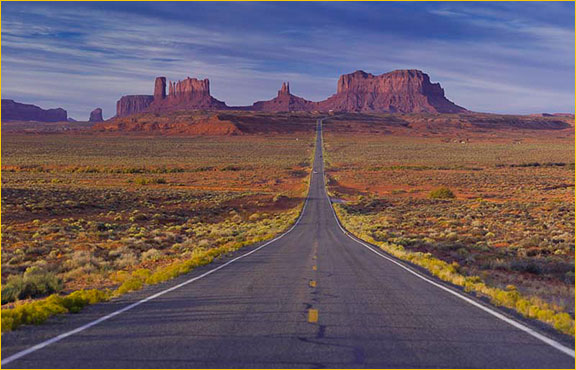
___________________________________________________________________________________
The Trip Continues…
It was a perfect scenario to go take a vacation with the Aptus II and put it through it’s paces in a very relaxed setting. I woke up early the next day and shot some fresh snow covered peaks. It was really cold, but the back worked just fine. I think I got about 150 images per battery when it was in the 30’s F. I have the settings on the back to only display a shot image when I click the thumbwheel on the side of the back. One click forward displays the image, another press forward brings up the histogram and the exposure info. You can press forward one more time to clear the overlaid info and scroll back viewing your images shot with the wheel.
The screen is one of the reasons I went with the Aptus II back over any current Phase One back. It is a 3.5” large touchscreen and easy to see in anything but direct sun where it can pick up reflections. It is brighter than the previous Aptus screens and has lost the “crunchiness” that was there in the past. It is still not on par with Nikon’s offerings but I wasn’t disappointed with its use. In direct sun, I just use my hands to put some shade on it and then it is easy to get a sense of the shot, colors, and histogram. I ran into a German photographer on the trip with a new Phase One body and P45+. We had fun comparing the systems. He kept shaking his head when looking at the Aptus II’s screen. It was really hard to see much detail on distant landscapes on the Phase’s screen. But none-the-less, I’m sure his image quality was also fantastic.
Because the Aptus II 10 has a 2:3 ratio for its sensor, and the the display has a 4:5 ratio, it shows the image with black strips above and below the shot. So it’s still very large and has room for your info and histogram overlays. But the image doesn’t fill out the entire screen like you see on the Leaf advertisements in PDN with the display image stripped in. I’m guessing the other Aptus II backs with different size sensors do fill the screen with the image.
The back’s menus are pretty simple and you can set up the shooting preferences, view the shot images and tag the ones you like, and go through image file setup and naming. You probably wouldn’t need to read the manual except for a few questions here and there. The back’s and Leaf Capture instructions are included on a DVD as PDFs that you can load to your desktop for quick reference.
I haven’t looked at the sensorflex technology that allows you to select a smaller common print size and reduce your image file sizes to match. The included sizes are 8×10, A3, A4, Letter, and Tabloid. I don’t see having a need for this in my line of work but it may be helpful to some shooters. I bought the back to go as large as possible during the shoot – not smaller.
I shoot everything in RAW for all of my cameras to spend less time fiddling and more time shooting in the field. If you want, you can set up the gray balance, curves, colors, saturation, grain, moiré reduction, and sharpness right at the back where the information will be transferred to Leaf Capture for your images. I think I will just continue to set the white balance to basic settings and then make finer adjustments in the converters. I’m not likely to use Leaf Capture so it’s not a big deal for me.
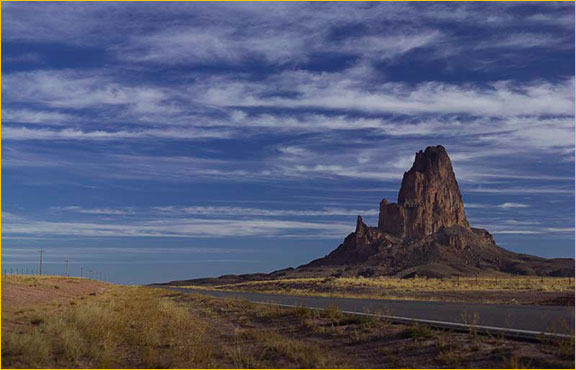
___________________________________________________________________________________
Heading Home…
I spent a number of days in the mountains and then headed through the Four Corners area toward Monument Valley and the Grand Canyon before heading home. I shot probably 700 images total on the trip and feel comfortable knowing how the back works and is best used. I will see how it does with the Profotos on location shooting some people the next few weeks and then I will be ready to bring it to work where it can share time with the Nikons and Leicas. I couldn’t be happier with the purchase or my dealer. I have some wall space that will be getting a fresh coat of paint and some new very large images form the Epson 9880.
Will I use the Contax and Aptus II 10 for everything? No. I’ll stick with the Nikons when I need huge depth of field and higher ISO’s or a combination of the two; if I am shooting people in motion; where things are unpredictable; when I need AF that is fast and spot on; and when I need to bang out a job with little fuss.
I’ll pick up the Leicas when I need to travel light and call less attention to what I’m doing and when I need to see a little differently around me.
I’ll pick up the Contax and Aptus II 10 when I want to print something special that’s very, very large with pure resolution and clarity; when I want that silky-smooth look with any focal length; when I shoot environmental portraits; when I start that unique personal project; and when I need to refresh my focus, elevate my spirit and my game.
But I don’t need my watermelon every day.
November, 2009
Copyright 2009 – Robb Willimson
You May Also Enjoy...
VJ7 Printers Play
Subscribe to The Video Journal Please use your browser'sBACKbutton to return to the page that brought you here.
Photographing the Eyjafjallajökull Volcano in Iceland
Eyjafjallajökull, NightBack in late March of 2010, I became aware that there was a spectacular eruption under way in Iceland. I immediately changed my plans
